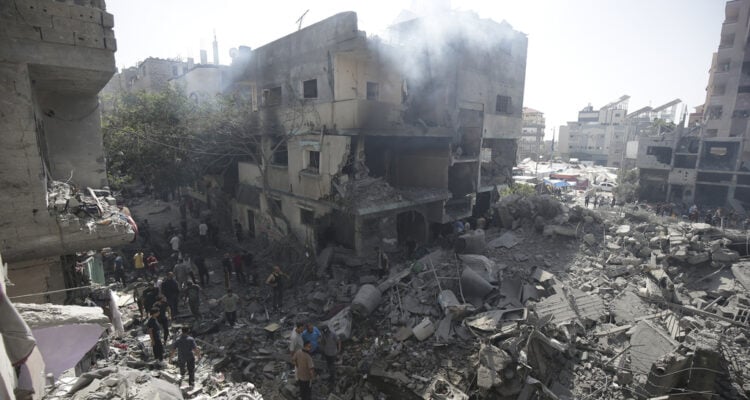The number of destroyed or damaged structures is unlikely to rise significantly, as intense combat operations have been winding down.
By JNS
Some 16% of permanent structures in the Gaza Strip have been destroyed since Hamas launched its latest war against the Jewish state, Israel Defense Forces data indicate.
The IDF damage, which covers the period between the Oct. 7 massacre and the end of last month, is significantly lower than numbers reported by the United Nations (50%) and foreign media (70%).
Following an analysis using digital aerial mapping done by Unit 9900 of the IDF’s Intelligence Corps in the year leading up to the conflict, the army concluded that 35,952 permanent structures were destroyed.
In addition, 84,276 temporary structures—including sheds and tents used by terrorist organizations—were destroyed, the analysis found.
The number of destroyed or damaged structures is unlikely to rise significantly, as intense combat operations have been winding down.
The IDF told Ynet that, unlike the U.N. and media outlets, it collects near-daily evidence using advanced drones and “other technological means,” as well as satellite imagery.
The reliable data will be shared with the international bodies investigating alleged Israeli violations of international humanitarian law during the conflict, the military said.
Multiple claims against Israel, which have been widely reported in the international media and which have been cited in cases in The Hague against the Jewish state, have proven inaccurate in recent months.
Earlier this month, the U.N.-backed Famine Review Committee found significant flaws in a report indicating that parts of Gaza are facing “current and imminent famine” amid the IDF operation against Hamas.
Last week, Arif Husain, chief economist and director of analysis, planning and performance at the World Food Program, admitted to JNS that none of the three benchmarks used to determine if a territory is in the Phase 5 level of food insecurity—famine—have been met.
Two months earlier, Abraham Wyner, a professor of statistics and data science at the Wharton School, concluded that the widely cited casualty figures distributed by the Hamas “Health Ministry” are likely fictitious.
A subsequent analysis of the figures by the Associated Press wire agency revealed a much lower number of possible civilian casualties during the war.
“This figure has been repeated by international organizations and many in the foreign media, including the AP,” the report added.
The U.S. House of Representatives passed an amendment to the annual State Department appropriations bill on Thursday that would bar Foggy Bottom from officially citing casualty figures published by Hamas.





